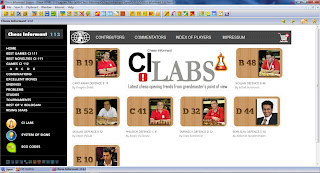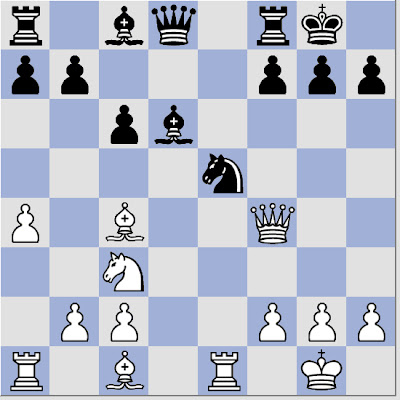A new section, "Modern Chess Theory," began appearing with CI 104. A theoretical survey of a recent trend had been an occasional feature in prior issues, but now it appeared in every issue. Offering a less comprehensive survey, CI Labs appeared for the first time with CI 110. CI 110 had five articles in CI Labs, CI 111 had six, and CI 112 has seven. These articles tend to discuss innovations or renewed interest in opening moves far deeper than I am likely to encounter at the level my opponents and I play. I can count on my fingers the number of games that I've played OTB that go through more than a dozen book moves. Even so, the articles are interesting for their strategic and tactical insights.
Part of what I learned to appreciate since my introduction to Chess Informants via ChessMate's booth at the 1996 Washington Class Championships (before the USCF negotiated an exclusive US distribution contract with the publishers, a contract now held by ChessCafe) was its simple expression of key chess concepts. In rendering the publication readable in any language, their system of signs stripped away the noise of verbose expression to present the essentials. Now, as they produce articles which must be translated into many languages, the analysis remains blissfully short and focused.
Bojan Vučković contributed an article concerning Philidor's Defense for CI 112 in which Black releases the central tension with 8...exd4.
White to move
He notes:Should White recapture on d4 with his queen, Black can exploit the relative exposure of her Majesty in the centre. ... The recapture with the knight is more standard, whereupon Black reacts in a very similar way.Several examples of play proceeding from each of these two choices form the substance of the article.
After 9.Qxd4 Ne5! White either retreats the bishop to e2 or snaps off the knight. Snapping off the knight might lead to exchange of queens and equality or more complex efforts that give Black plenty of chance for advantage. For example, 10.Nxe5 dxe5 11.Qxe5?! Ng4 12.Qf4 Bd6 13.e5 Nxe5 looks good for Black.
White to move
*I started buying Chess Informant print publications in the late-1990s. See "Playing by the Book" for an explanation of the immediate benefits. In 2001, or thereabouts, I purchased my first electronic editions. The cost of such publications remained daunting and my collection grew slowly. Then, in 2008, I used the prize money gained from losing the City Championship (prize money gained from winning the Contender's Tournament was deferred until after the Championship match) to purchase The Best of the Best 1000. Owning a copy of this $60 paperback rendered me eligible for a contest, and I placed fifth! The prize of 500 Euros worth of CI goods allowed me to complete my collection of Informants 1-103, as well as acquire other products, such as the electronic edition of the Encyclopedia of Chess Openings.

















No comments:
Post a Comment